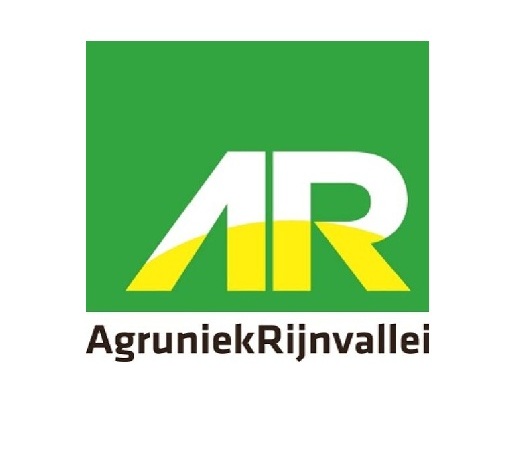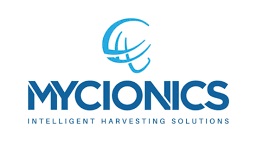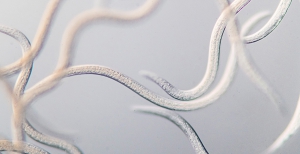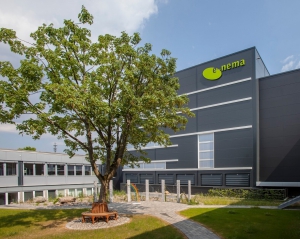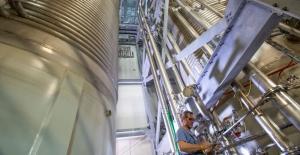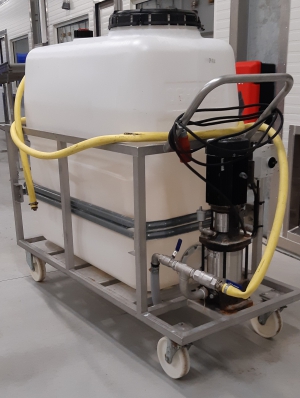In the realm of mushroom farming, managing pests is crucial for maintaining healthy crops and ensuring bountiful harvests. Nematodes, have emerged as a popular biological control agent against a variety of pests, including scriarids, phorids and other soil-dwelling insects. However, integrating nematodes with other plant protection substances requires careful consideration to maximize their effectiveness and sustain the delicate balance of the farm ecosystem.
Understanding Nematodes as Biological Control Agents
Nematodes used in pest control are generally entomopathogenic, meaning they infect and kill insect pests. Species such as Steinernema and Heterorhabditis are commonly utilized. These beneficial nematodes search out and enter their host insects, releasing symbiotic bacteria that kill the pests from inside. This biological approach is highly targeted, minimizing harm to non-target organisms and the environment.
Compatibility with Chemical Pesticides
Nematodes can be tank mixed and jointly used with many substances and chemicals without problem. They are delivered in a Dauerjuveniles status (a bit like a hibernation status). Therefore, there is little interaction with their surroundings which allow a broad range of mixtures.
To ensure compatibility, e-nema provides a comprehensive list of the compatibility of nematodes with other plant protection products. The list can be downloaded free of charge from the e-nema website.
Please use this list to further simplify and further widen the usage of nematodes. If you come across chemicals and substance which are not on this list, please contact e-nema and they will investigate on it.
Conclusion
For mushroom farmers, nematodes represent a potent ally in pest management. And their biology allows a wide use with various chemicals and substances. A lot of work has been done to list the most commonly used chemicals and their ability to mix with beneficial nematodes.
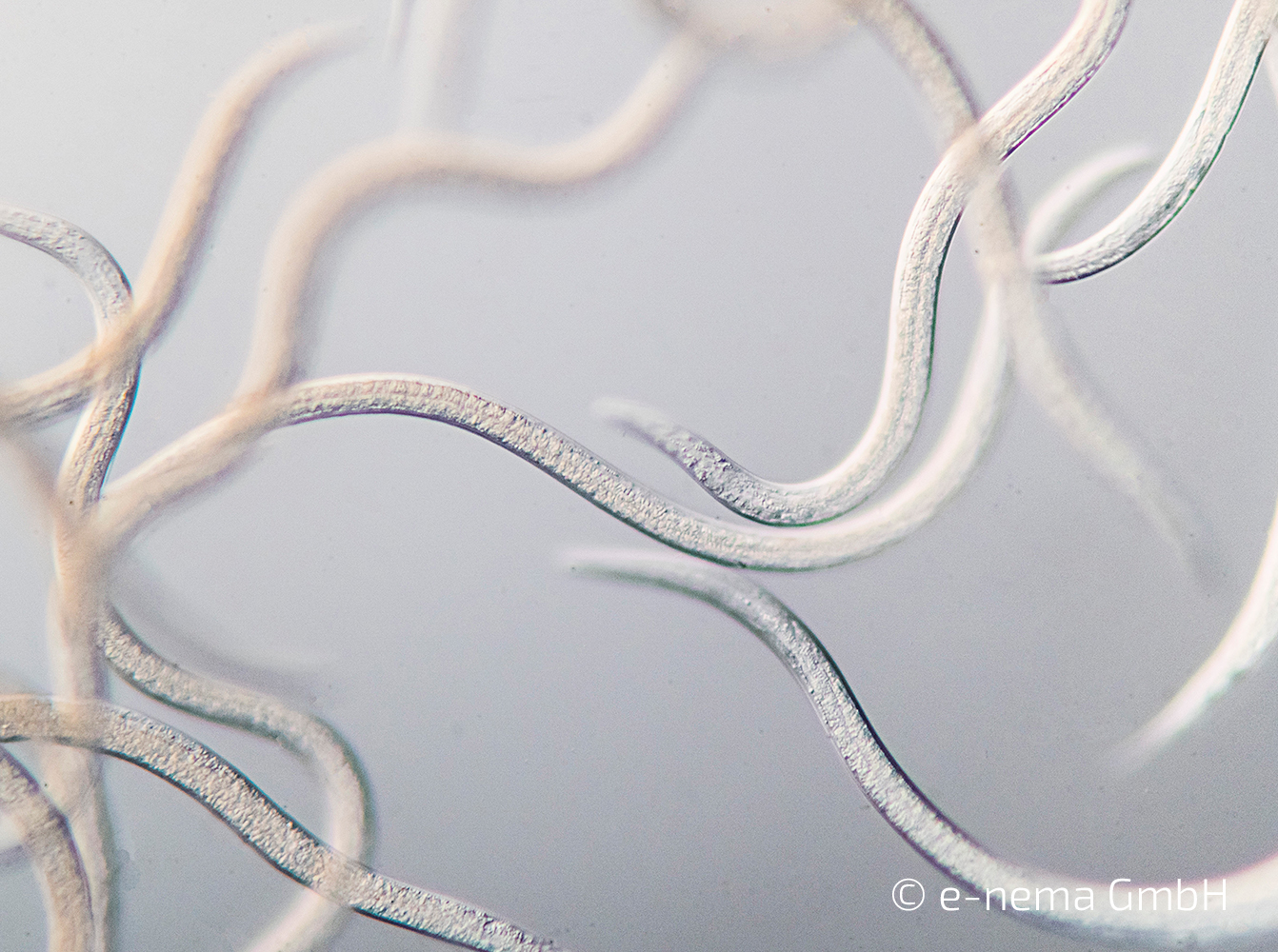
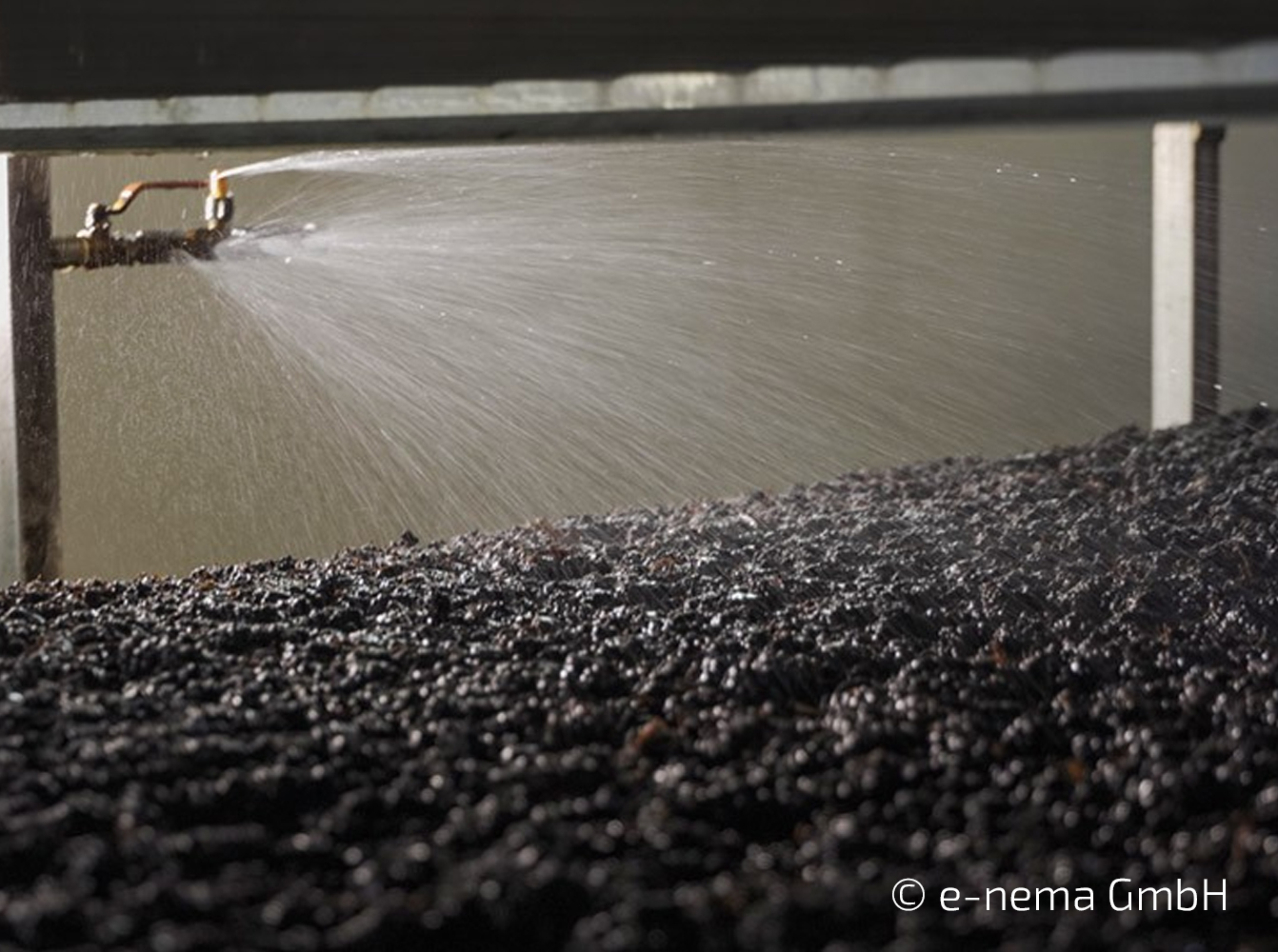
e-nema GmbH celebrates 25 years
In 1997, Prof. Dr. Ralf-Udo Ehlers, Dr. Arne Peters, and Tillmann Frank started their joint mission to produce entomopathogenic nematodes for biological pest control on large-scale. What started as a spin-off of a university research project has grown into an internationally successful company with over 70 employees. The three partners share the vision of sustainably reducing the global use of chemical pesticides by providing biological alternatives. To achieve this, it is necessary to offer biological products in large quantities and at competitive prices. For this reason, e-nema GmbH has always invested many resources in research and the expansion of production capacities and has meanwhile risen to become the largest producer of entomopathogenic nematodes worldwide.
To celebrate its 25th anniversary, e-nema has modernized its brand identity and corporate website. An important step to communicate the dynamic growth and the expertise gained over the years in the field of biological crop protection in an appealing way to the outside world.
Sales Manager and mushroom expert Ulrich Tiemann is optimistic about the future after a year of difficult general conditions:
"We have already achieved a lot in the past years, but the road towards sustainable agriculture and food production is still very long. The mushroom market is an absolute positive example for us. Through the intelligent use of resources and the use of nematodes to control sciarids and phorids, many people are already being supplied with healthy, high-quality, and sustainable mushroom products. And we are very proud to play our part in this. We assume that awareness will also change more and more in many other plant cultures in the future, or that the change is already in full swing."
Visit the e-nema website here
www.e-nema.com
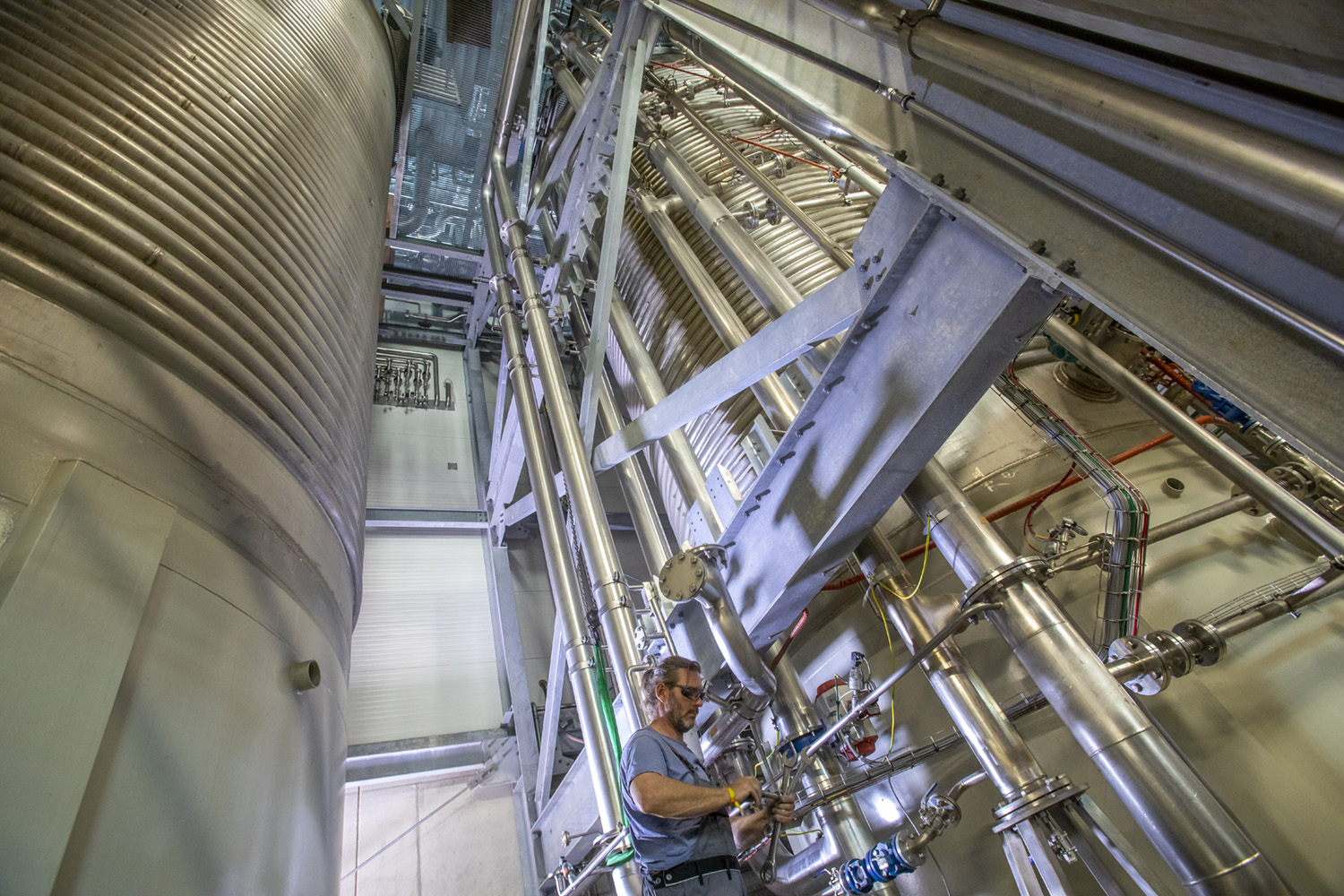

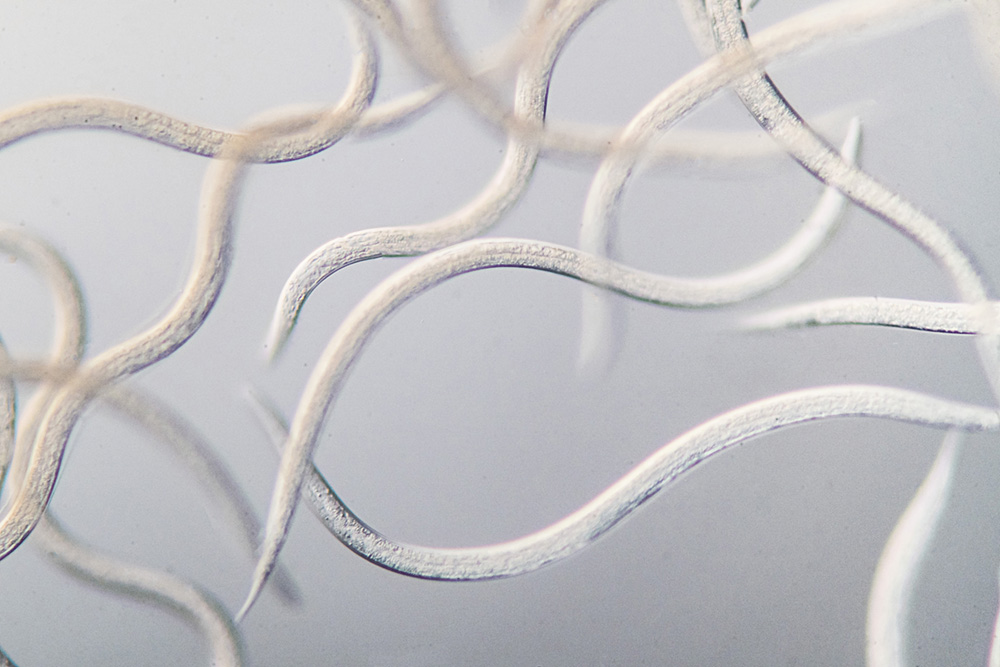
New sales manager for the use of nematodes in mushroom cultivation at e-nema GmbH Germany
Dear All!
My name is Ulrich Tiemann and since April this year I started working for e-nema. I received a very cordial welcome, plus a lot of support and training from the e-nema team.
It is great working here. Having a background in agriculture, international food trading and sales, I am working myself into the mushroom industry now. I do look forward to getting to know you. Through my work, I aim to support you and add value to the mushroom industry with the help of entomopathogenic nematodes, which e-nema produces at an industrial scale.
Hope meeting you soon!
New employee at e-nema
e-nema GmbH is a successful company and market leader in the production of nematodes and represents the biological alternative to chemical insect control. Therefore e-nema combines cutting-edge technology and biological crop protection, always with the aim of making the world a better place.
An international team works in the company's laboratories, on continually improving processes and products as well as developing new ideas and solutions for plant protection, aquaculture and in biocatalysis, the 'white' biotechnology. They are based in Schwentinental, Germany. In order to further strenghten their position in the worldwide mushroom market they decided to invest in marketing by creating a position for a dedicated marketing manager. Mads Wollesen was hired in January to take up this position.
Mads is quite new to the mushroom business, but an old hand, when it comes to marketing. With a masters degree and several years of working experience in an online marketing agency, his biggest motivation is to help e-nema to optimize all their communication and marketing activities to establish and further expand its position as a global player in the production of biological plant protection.
„I am very excited to be here at e-nema and extremely motivated to dedicate my workforce to push biological plant protection solutions all over the world. I have already gathered some impressions about the global mushroom industry and can't wait to spread my roots there. e-nema is very science-driven and has many stories to tell. My task now will be to bring them out into the world.“
Mads Wollesen
Marketing Manager
Tel +49 (0)4307 8295-293
E-mail This email address is being protected from spambots. You need JavaScript enabled to view it.
Website: www.e-nema.de
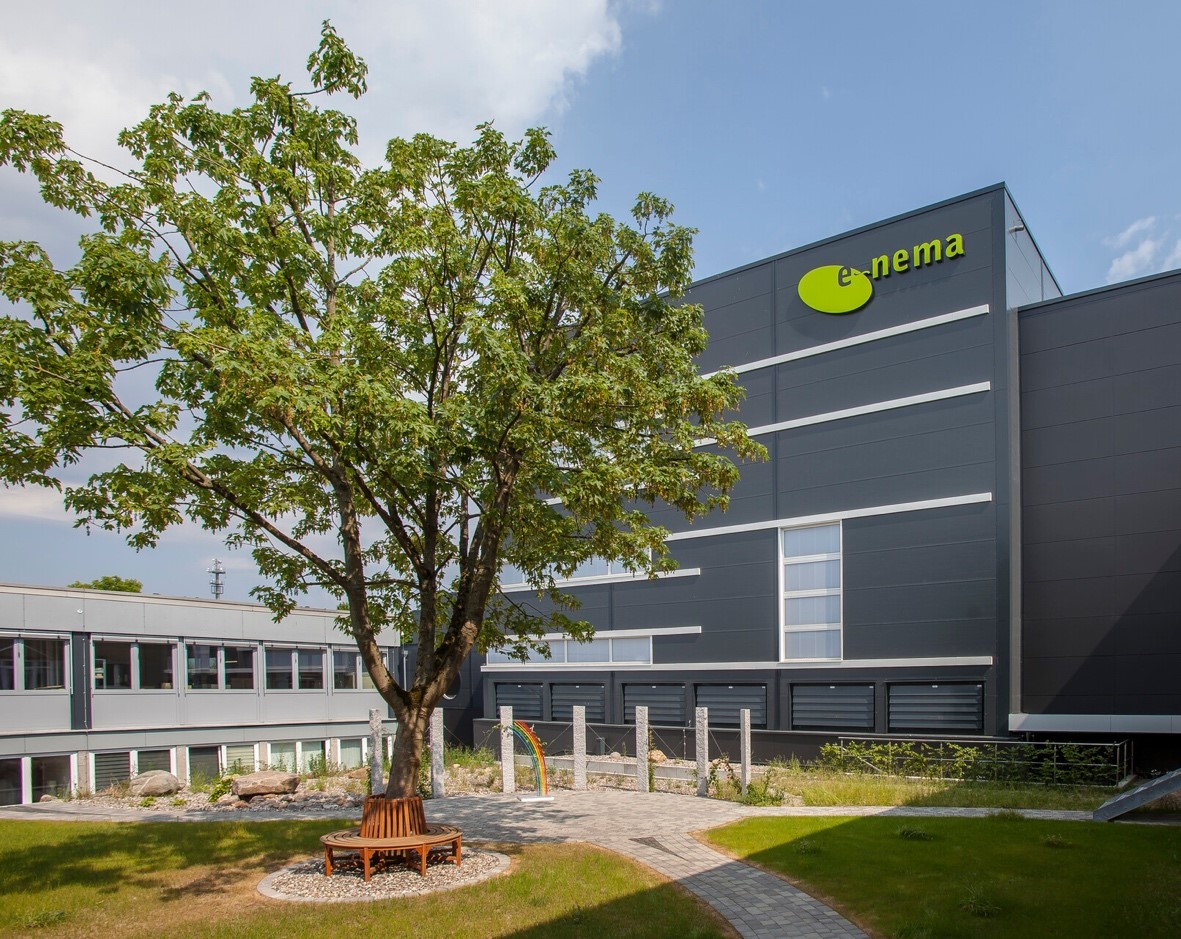
e-nema: Location, markets, customers
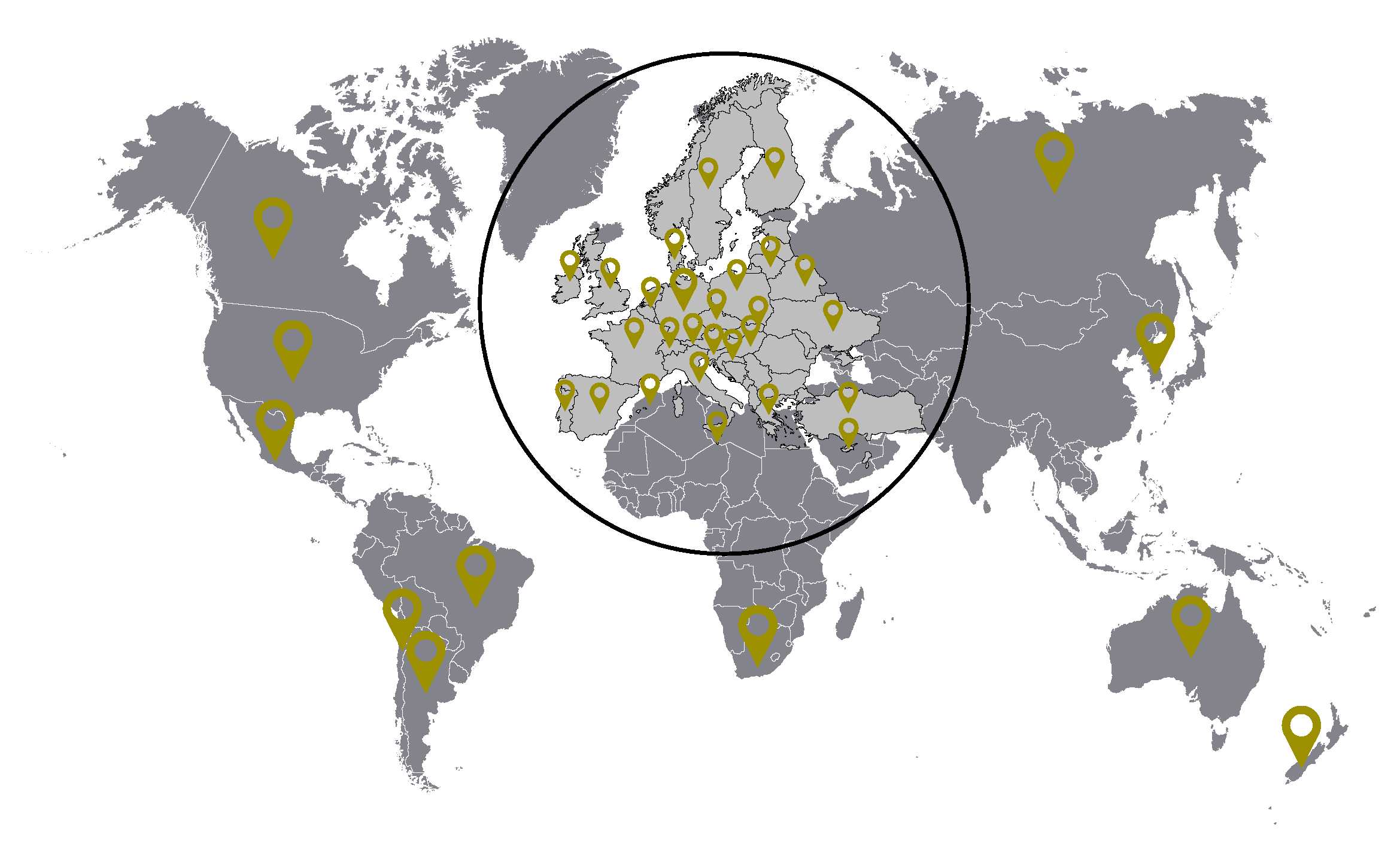
Location
e-nema GmbH produces useful nematodes for biological crop protection.
Our location is in the far north of Germany, where the nematodes are produced and shipped worldwide.
Markets
Our main sales markets are currently in European countries such as Germany, Benelux, Poland, Ireland, Austria, Switzerland, Bulgaria and Romania as well as in North America. Eastern Europe and other countries such as Hungary, France, Italy, Spain and Georgia are becoming increasingly important. But Australia, New Zealand and Africa are also looking for biological alternatives to chemical crop protection and are increasingly using our nematodes.
Customers
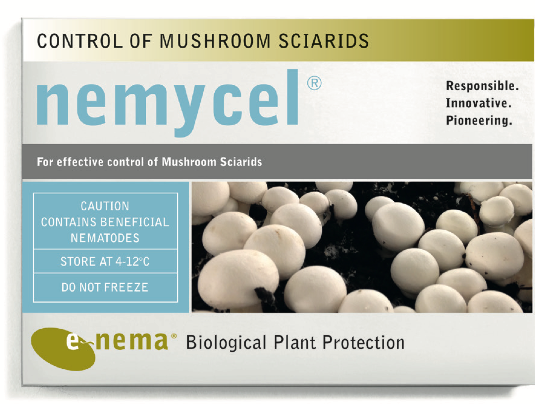 Our customer portfolio ranges from major global customers to medium-sized companies and end customers. This includes professional users from agriculture, fruit and horticulture as well as private users from the home and garden area. We rely on close cooperation with our strong and well-networked partners.
Our customer portfolio ranges from major global customers to medium-sized companies and end customers. This includes professional users from agriculture, fruit and horticulture as well as private users from the home and garden area. We rely on close cooperation with our strong and well-networked partners.
The quality of our offered products should meet their requirements and enable them to operate profitably and sustainably. We maintain close contact with our partners and customers and are interested in long-term cooperation.
We also have customers in the global mushroom industry who value organic crop protection. Consumers are increasingly paying attention to residue-free goods and more and more chemical agents are losing their effectiveness or are being banned by the EU.
We offer the worldwide mushroom industry a successful biological solution to the problem of fungus gnat control in mushroom cultivation.
Our product nemycel® is already being used very successfully in professional mushroom cultivation. It contains the insect-pathogenic nematode Steinernema feltiae, a naturally occurring nematode that has specialized in the larvae of sciarid gnats, among other things.
Learn more about the product:
https://www.nemycel.com/
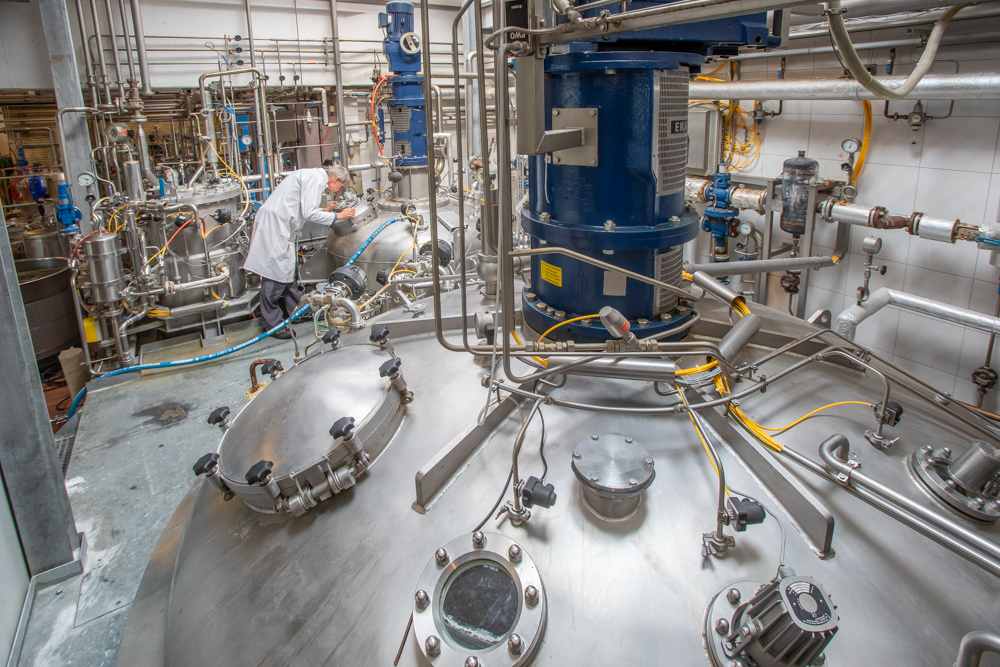
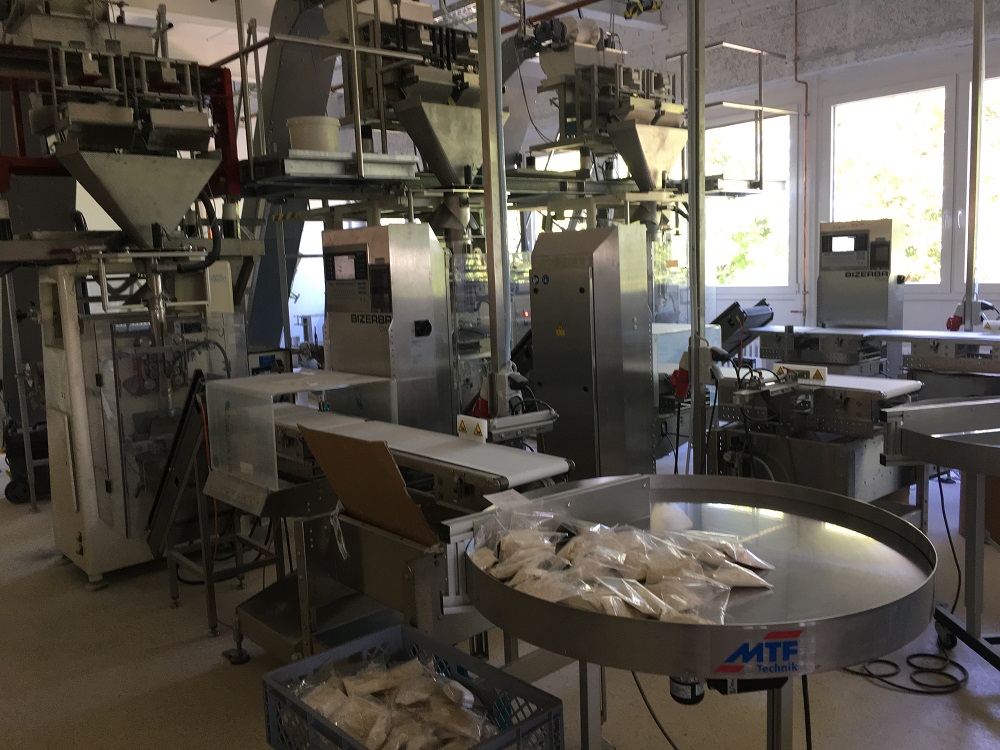
In order to continue to serve our partners and customers smoothly in the future and to ensure a seamless supply, we are currently investing in modern production facilities and expanded storage capacities. We look forward continuing our support to mushroom growers around the world as a competent partner with scientific expertise.
The nematodes are produced in large bioreactors and packaged for worldwide shipping after harvest.
Pictures: k-film, Michael Kottmeier
Contact person for public relations:
Karen Duncker - This email address is being protected from spambots. You need JavaScript enabled to view it.
Tel. +49 (0)4307 -8295-156
e-nema GmbH
Klausdorfer Strasse 28-36
D – 24223 Schwentinental
Tel. +49 (0)4307-8295-0
This email address is being protected from spambots. You need JavaScript enabled to view it.
www.e-nema.de
Organic trend stimulates the sales market
The consumer demand for residue-free food is increasing, and chemical alternatives in mushroom cultivation are becoming less and less available.
E-nema GmbH supports this change. It is the world market leader and has decades of experience in the production of useful nematodes.
Useful nematodes are natural opponents of many pests in ornamental plant breeding, on strawberry, blueberry and apple orchards as well as in maize cultivation. They are also increasingly being used, successfully within the mushroom cultures, in the fight against sciarids.
Nematodes are barely visible to the naked eye, but they are very effective. They are sent all over the world to be used in biological crop protection.
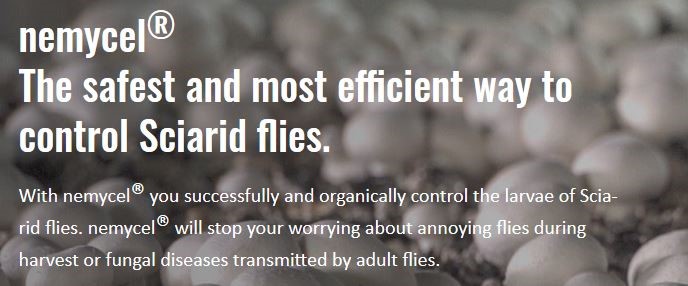
The main sales markets are currently in Europe and North America, but countries such as New Zealand and Africa are also increasingly relying on biological alternatives to chemical crop protection.
E-nema maintains close contact with its customers and will in future, be at the side of the mushroom grower as a partner with scientific expertise and an effective biological product against sciarids.
Despite the pandemic, sales of the north German company e-nema GmbH rose by more than 30% last year.
The company will continue to invest in modern systems and in the qualifications and motivation of its employees. Their number is expected to increase from currently 60 to 100 in the coming years and a doubling of sales from 10 million in 2019 to 20 million by 2024 is also planned.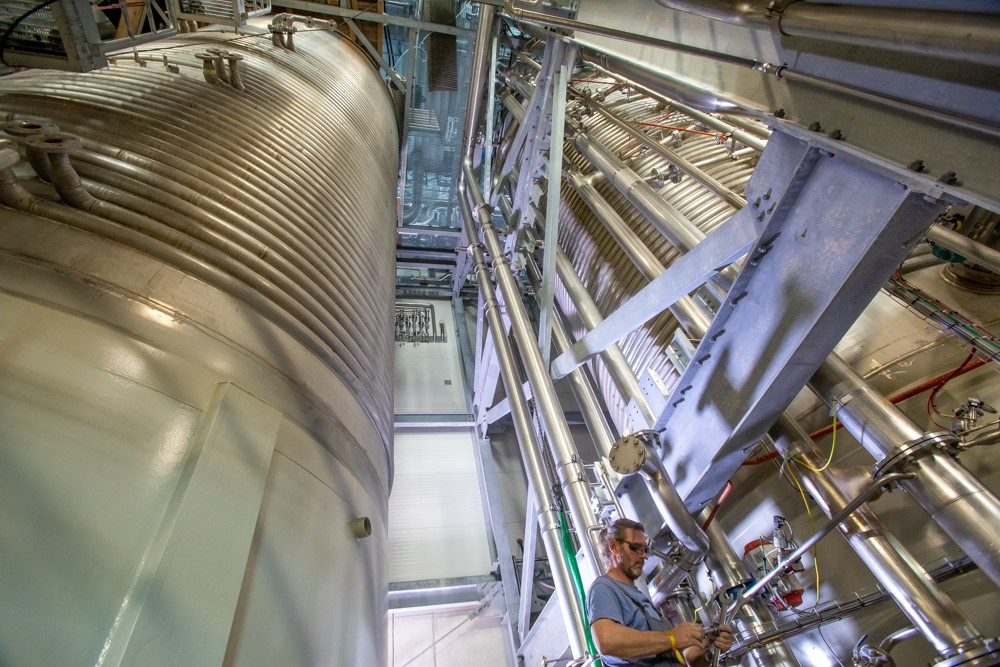 In these huge bioreactors, e-nema GmbH produces useful nematodes for biological crop protection
In these huge bioreactors, e-nema GmbH produces useful nematodes for biological crop protection
Photo: k-film, Michael Kottmeier
With nemycel® you sucessfilly and organically control the larveae of Sciarid flies. nemycel® will stop your worring about annoying flies during harvest or fungal diseases transmitted by adult flies.
And they keep flying…
I am writing this blog on November 2. 2020.
It is the warmest November day ever. The outside temperature today will hit 20° C. Normally this time of the year in Europe growing is fairly easy. Older growers always say: just open the doors and let the outside climate do the job. This year and probably oncoming years the situation is different. It starts with arable crops being harvested later than normal. The potatoes are still being harvested and the corn is only gone this week. Meaning that there was a lot of dust and organic material flying around. Especially since many farms are situated in rural areas. All this organic matter being airborne has caused a big problem with Mycogone and verticillium. But another and maybe even bigger problem is that the insects are still there. It is known that phorids stop flying around 5° C and sciarids even fly till it starts freezing. And that situation seems to be far away. And that is why I see at many farms that the infection with sciarids was almost gone but is returning (rapidly) again. Because their hiding place in the corn is gone. Just at the moment when many farms are scaling down on fly control. The combination of these two factors, the insects and the dust causing bubble, is a dangerous one which may last for another month or so. What to do about it? Trying to kill the verticillium or Mycogone is the first thing growers do but if the vector (insects) to carry the spores is still there the problem stays. That is why I always try to aim at the insects first. In this case practically always a problem with mosquitos or sciaridae. Often chemicals are chosen and many times a combination of a short term chemical by fogging and a long term chemical as a drench on the casing soil. But lately I see very good results (as good as the chemical treatment) with the biological control with nematodes as a drench on the casing. In price there is not much difference but in application it does make a difference. It is not dangerous for the person who applies it and it is not dangerous for the environment. On the other hand it is noticed that many supermarkets want a clean, read: chemical free, product. And nematodes are not regarded to be dangerous. Even more, farms use it as advertising for their product. It is the same as with my own business “Akkie’s Tuin”. An apiary and orchard. We do not use chemicals, only biological control and we use that as a selling point. We notice that we can get higher prices for our products by working organic. The only thing is that the customer needs to know what you do. With the product goes the story about what you do. So if you have an insect problem at the moment take this into consideration. A few remarks on the use of nematodes. Make sure they are delivered fresh onto the farm and put them into the cold store right away. Overheated nematodes will die. When using them, you need sciarids on the farm. The nematodes feed on the larvae of the mosquito and if there is no food they will die. The manual about using the nematodes often says that they have to be applied directly after casing the compost. I however have better experience in the so called split application. So not the 2 million nematodes per m² directly after casing but 1 million on the casing day and the other 1 million 4 to 7 days later. I prefer 2 days before the start of the recovery period as the last day of application. So practically this means the second application on day 4 after casing. If you apply it a day before recovery you knock back the mycelium too much.
But whatever you do, do it now. If you think that frost will stay away for a while and you see some sciarids flying around, waiting is not an option. Especially is you also have a bubble problem. And the difference between sciarids and phorids is fairly big. As a reminder: Phorids have a nasty smell if you smash them under your finger, a sciarid has no smell. Phorids are fast moving. They walk fast. A sciarid has the tendency to just sit. Phorids are a lot smaller and the antennae are practically not visible while the sciarid has large visible antennae.




